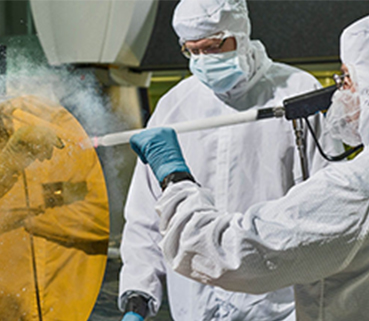
Eco-Friendly Cleaning: How Dry Ice Blasting Fits into CSR Strategy
Eco-Friendly Cleaning: How Dry Ice Blasting Fits into CSR Strategy
Organizations are increasingly being evaluated based on their work around corporate social responsibility (CSR). Having a CSR strategy allows an organization to demonstrate how it views its responsibility to wider stakeholders and not just shareholders and investors. Through CSR activities, companies work towards improving the impact their business operations have on the wellbeing of employees, community, society and the environment in general.
Despite recognizing the importance of CSR, organizations may find it difficult to put it into practice. The task is not easy or quick and can prove to be overwhelming. Therefore, when developing policy, management may not automatically think about their cleaning processes or realize that this may be a good place to start. It can be!
Cleaning Without Waste
Traditional cleaning methods such as soda blasting, sand blasting, and chemical and solvent cleaning methods are more popular but their carbon footprint is not as impressive as dry ice blasting. Cleaning with dry ice leaves no carbon footprint at all because the process does not result in any additional secondary waste.
Dry ice blasting is an industrial cleaning system that is non-abrasive, non-toxic and as its name suggests completely dry. Its uses are many and can be applied across a multitude of industries including aerospace, food and beverage, foundry and historical restoration. The process uses dry ice pellets that are a by-product of other industrial processes made from reclaimed Liquid Carbon Dioxide (C02). Once the pellets are blasted to the contaminated surface, the resulting micro-thermal shock severs the bond between the coating of grime and the substrate. As the dry ice pellets vaporize, the force of the rapidly expanding vapour helps lift dirt from the area, leaving a clean surface. All that remains is to dispose of the substance/debris that was removed – since the dry ice pellets vaporize, there is no residual waste from the cleaning process itself!
Avoiding contamination with dry ice blasting
As well as the benefits of not having any secondary waste, dry ice cleaning is also recommended to prevent downstream contamination which can be the case with sand, soda or any cleaning that involves water. Furthermore, there are increased risks to the natural environment in cleaning where dry ice pellets are not used, especially if the process of choice contains chemicals.
CSR is not just about leaving the environment in good shape, but as explained previously it also concerns the health and safety of an organization’s workforce. Adopting dry ice blasting methods for cleaning workflows can reduce the levels of danger that employees are exposed to such as airborne substances and harmful chemical waste produced via processes that use chemicals and solvents.
For a CSR strategy that doesn’t just look good on paper and is deliverable on a practical level, it’s certainly wise to consider dry ice blasting.
Wickens Dry Ice Blasting tackles the toughest jobs across Ontario, offering fire restoration, mould remediation, asbestos abatement, lead paint abatement, and more. Contact us today for a consultation or emergency service!
You Might Also Like:
5 Reasons Why Dry Ice Blasting is Worth the Investment
Dry Ice Blasting: Effective Cleaning Method for Fire Restoration and Cleaning of Commercial and Industrial Ceilings
Why Dry Ice Blasting is the Number 1 Solution for Mould Remediation
- Happy Holidays from Wickens - December 20, 2023
- Maximize Your Year-End Shutdown: The Ideal Time for Industrial Cleaning with Dry Ice Blasting - November 24, 2023
- Introducing the Viking 4000 – A Game Changer in Dry Ice Blasting - July 28, 2023

Recent Comments